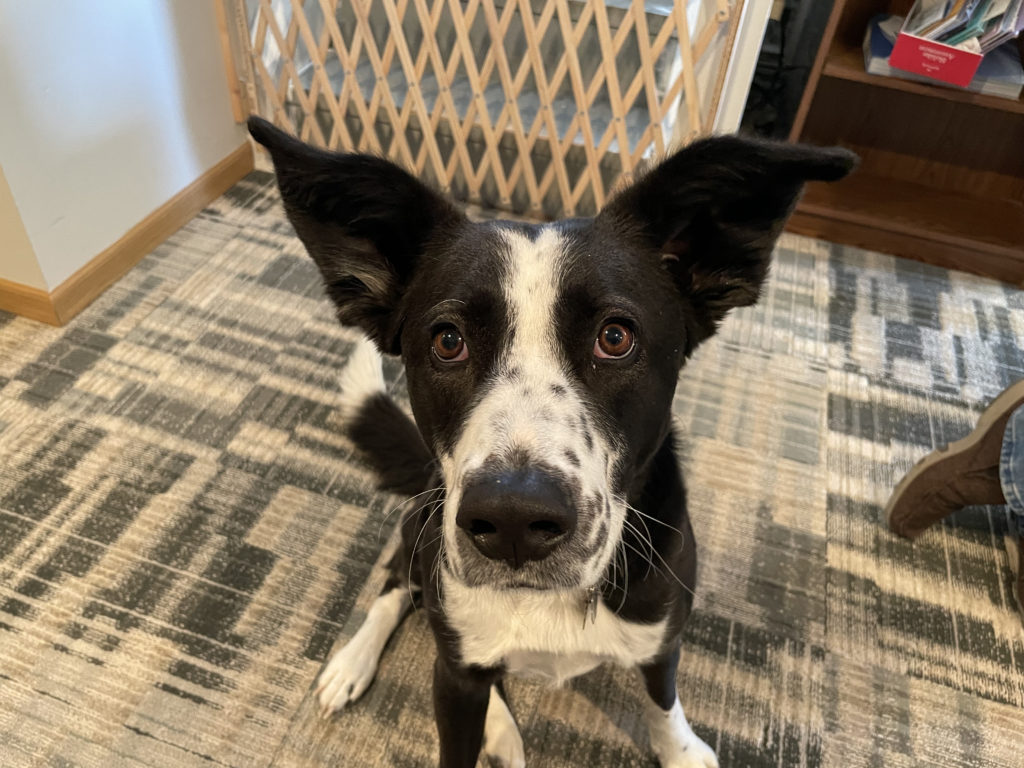A few Force Free Kennel Training Tips for Skye Dog
By: David Codr
Published Date: February 24, 2022
For this in-home Nebraska dog training session we did some force free kennel training with 2 year-old Border Collie mix Skye.
Skye’s kennel training was an urgent need due to her destructive behavior stemming from an intense case of Separation Anxiety. She had broken through several kennels, scratched up her face and broken teeth trying to escape the kennel. As a result, her guardians had gone through multiple kennels.
While finding a better, more durable kennel is important to keep her from injuring herself or destroying items in the home, helping her feel comfortable in the kennel is the most important thing any time you want to teach a dog to use a kennel. This is something we cover in our dog behavior modification sessions often.
An Easy Way to Kennel Train a Dog Without Force or Punishment
.
Fortunately, Skye has some pretty awesome guardians who have gone the extra mile, and then some. They had already been doing many of the force free create training tips I covered with them. They just needed some help in breaking it down into small steps to make it easier for Skye.
To help this beautiful rescue dog get over her fear of the crate, I pulled out my camera so the guardians could film me sharing these crate training secrets. If you have a dog that hates the crate, be sure to check out the free positive dog training video below.
One of the most important, and most frequently overlooked part of positive crate training is the dog is comfortable the entire time. If your dog is whining inthe kennel, barking, drooling, pawing the door, barking, pushing the door, etc – those are all indications the dog is not ok being inside. The old method of “letting the dog cry it out” was completely ineffective and has been dropped by modern dog trainers. Why? Because the dog is basically practicing freaking out in the crate. Forcing them to endure that until they stop will only exasperate the issue. Dogs never act this way if you are using force free kennel training.
As we practiced the positive kennel training exercises I detailed in the video after we wrapped, the guardian had difficulty proceeding in small steps. This is a common thing for many people, but needs to be avoided. When she moved to quickly, Skye responded by starting to show some signs of discomfort or anxiety; licking lips, yawning or getting up out of a down or sitting position.
When the guardian went slower, using smaller steps for this crate training exercise, Skye relaxed her body, sat or laid down or did some self care. I made sure to point this out to the guardians as reading a dog’s body language is a important part of force free crate training.
We also went over some other tips that will help with Skye’s separation anxiety; creative forms of exercise, enrichment (feeding out of snuffle mats, cow knee’s, bully sticks zip tied to the back of the crate, etc) and the importance of providing mental and physical exercise throughout the day. This is a vastly superior strategy to exercising the dog in big chunks that take so much out of Skye that she goes to sleep. A better method is to have exercise or mental stimulation every few hours throughout the day.
To help the guardians remember all the dog behavior tips we covered in this in home Nebraska dog training session, we filmed a roadmap to success summary video that you can watch below.
Categorized in: Dog Behavior


